How To Make Driftwood Sink Faster: 9 Proven Tips
Nobody enjoys watching driftwood floating around in the aquarium. Some wood logs can be exceptionally stubborn and will take forever to sink. If you are getting impatient, but your driftwood doesn’t seem to stay at the bottom and remains to float.
The following article contains some of the best techniques you can use to sink your driftwood. And if you are wondering how long it may take you to get the job done, read the subsequent sections for detailed answers.
9 Proven Ways to Make Driftwood Sink Faster
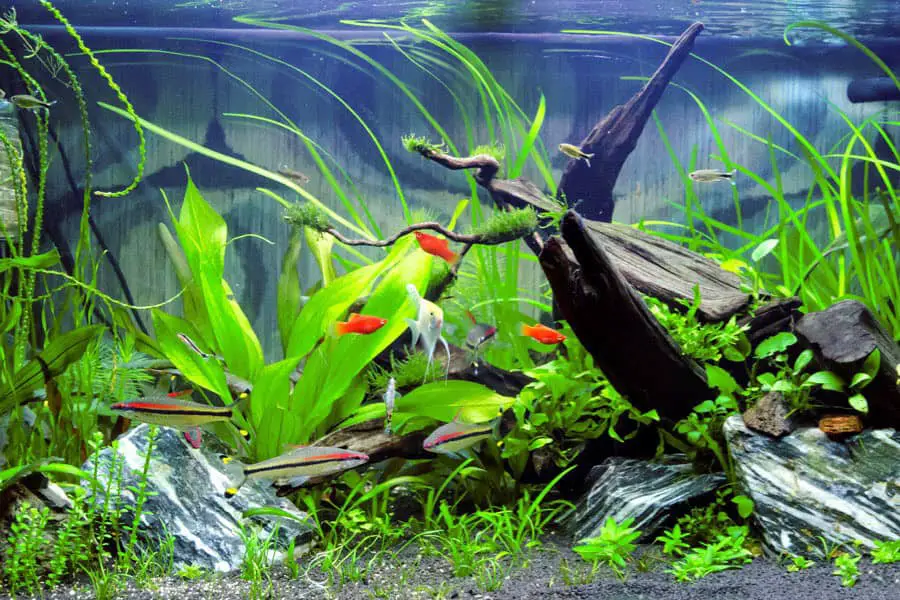
For driftwood to sink, it has to be heavier than the water it displaces. Most driftwoods are not dense enough to do so, and as a result, they float. Oftentimes aquarists have hard times trying to make it sink.
The only way to make driftwood sinkable is to hold it submerged into the water until it gets waterlogged. Below are some of the common practices you can use to make your driftwood saturated. This will allow the log to sink naturally and effortlessly.
1. By Boiling The Driftwood
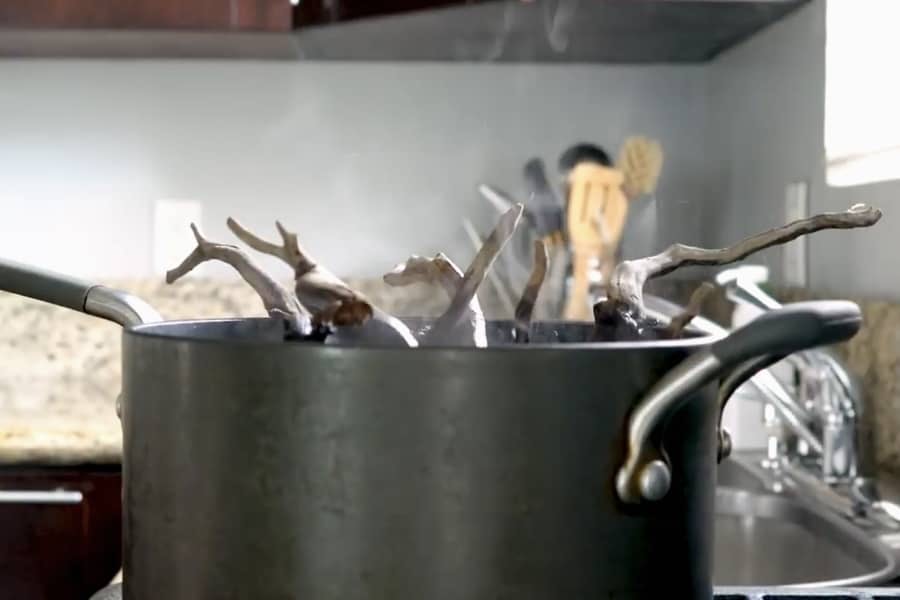
Driftwood will not sink until it has absorbed enough water. Boiling opens the pores of the wood, forcing the water inside and making it saturated in less time. It also removes the initial tannins and makes driftwood free from all sorts of harmful bacteria and parasites.
All you have to do is throw driftwood into a water-filled container and let it boil until it gets waterlogged. The amount of time your driftwood might take often depends on its type, shape, and size. Some woods are more porous than others and may take less than 2 hours to soak up the water fully. While some hardwoods make require 10 hours of boiling or more for complete saturation.
2. By Soaking Driftwood In The Water
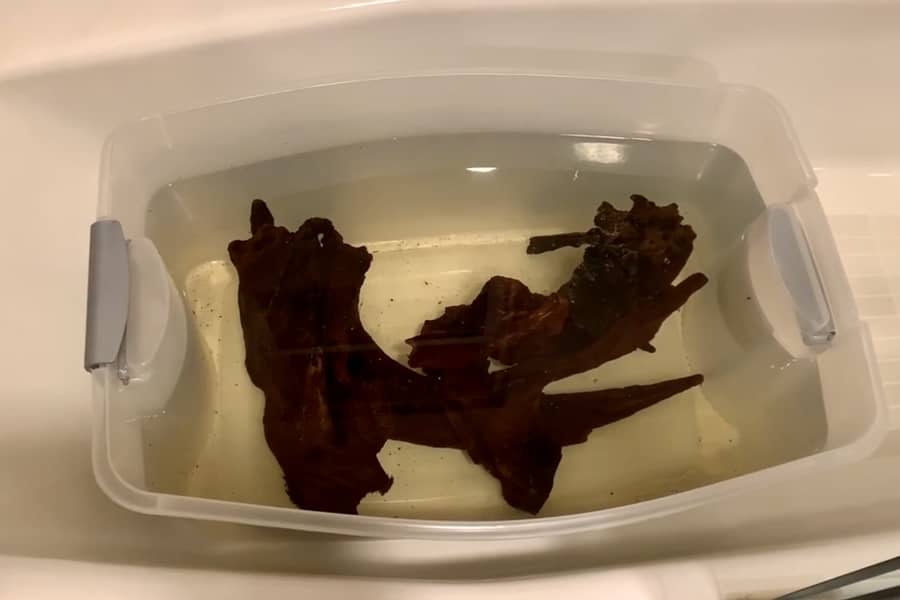
Another method to make your driftwood sink is to soak it in water. The air bubbles trapped inside the wood make it harder to sink. However, when you put it underwater, the air bubbles will be forced out to make room for water.
Get a bucket or container big enough for the driftwood to fit perfectly. It’s crucial to weigh down the log so it remains submerged and in one place. You can put a rock over it or anything heavier enough to hold it down. Once driftwood has soaked enough water, it will no longer be buoyant. And eventually will sink without applying any force to it.
As we know, the amount of time driftwood may take for getting waterlogged is mainly depends on the type of wood it’s made up of. The shape and size of the log also play a major role. Since there are a variety of driftwoods, we can’t tell exactly how long it may take your wood log to become sinkable.
You should simply go for it and try the method yourself instead of figuring out the amount of time it might take. Leave the driftwood submerged with something weighing it down. Every once in a while, take off the object and see if the log is still floating or has achieved saturation.
3. By Adding Weigh On Driftwood
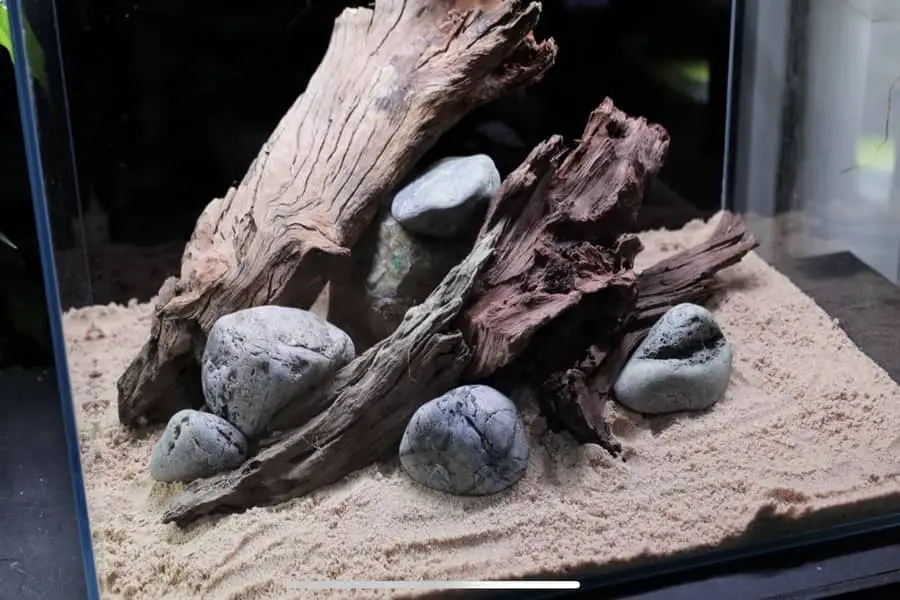
Are you in a hurry to have driftwood in your aquarium and don’t want to wait? Instead of soaking driftwood in a separate container, you can put it directly into the aquarium and let it take as much time as required to get waterlogged.
To keep the driftwood from floating, you will require to put something over each corner to weigh it down. Such as an aquarium rock that is heavier enough to hold the wood log downwards. In a matter of time, the wood will soak enough water to sink on its own. Afterward, you can remove the rock and put the driftwood at your desired placement or however you want.
Driftwood comes in various shapes, so there is a chance that yours might not allow anything on the top of it. If you are putting a stone over your driftwood, make sure it is well balanced and placed firmly with no chances of falling. You don’t want to break your glass.
4. By Using Suction Cups
If you are dealing with driftwood that doesn’t seem to sink no matter what you do, here is how to place it in your tank using suction cups.
All you have to do is, buy some suction cups and screw them to the bottom of the driftwood, and then stick it to the aquarium’s base. Easy-peasy!
Depending on the size of your driftwood, you may require one or more suction cups to hold it down. It helps to have driftwood with a flat surface, making the job easier.
Many people are concerned about screws rusting in their tanks. Let us tell you, as long as you are using marine-grade stainless steel screws, you don’t have to worry about it. These are specially engineered not to corrode.
This technique will work like a charm unless you have a sand substrate in your aquarium. Suction cups can’t stick on the sand, so you will have to move some of it around to get the base underneath the substrate.
Keep in mind it may get messy as you try to make room for the suction cups to get a hold of the bottom glass.
5. By Using Slate Tiles
This method is quite the same as the above one. The only difference is, here we are using slate tiles instead of suction cups.
Get a piece of slate and some rust-proof screws. You will easily find it on Home Depot or any LFS. Next, drill holes in the bottom of the driftwood and screw it with the slate tile. Place it in the aquarium and cover the slate with the substrate.
If you want more weight, you can stack some extra pieces of slate or rocks over it. You will have to keep the slate attached to the driftwood until it gets waterlogged.
There are some limitations to using slate tiles, as it does not apply to all driftwood shapes and placements. We suggest you skip on any techniques you find unsuitable in your case.
6. By Making Holes In It
Another method to sink driftwood faster is to drill holes in it. This allows water to pass through holes, and making it easier for the driftwood to sink.
While drilling holes make sure you don’t drill too many or too big holes. Too many and too big holes can ruin the aesthetic look of the driftwood, and, also decrease its lifespan.
If you don’t want holes to ruin the aesthetic appeal of the wood, make them in hidden places that aren’t usually in the sight.
7. By Glueing It Down
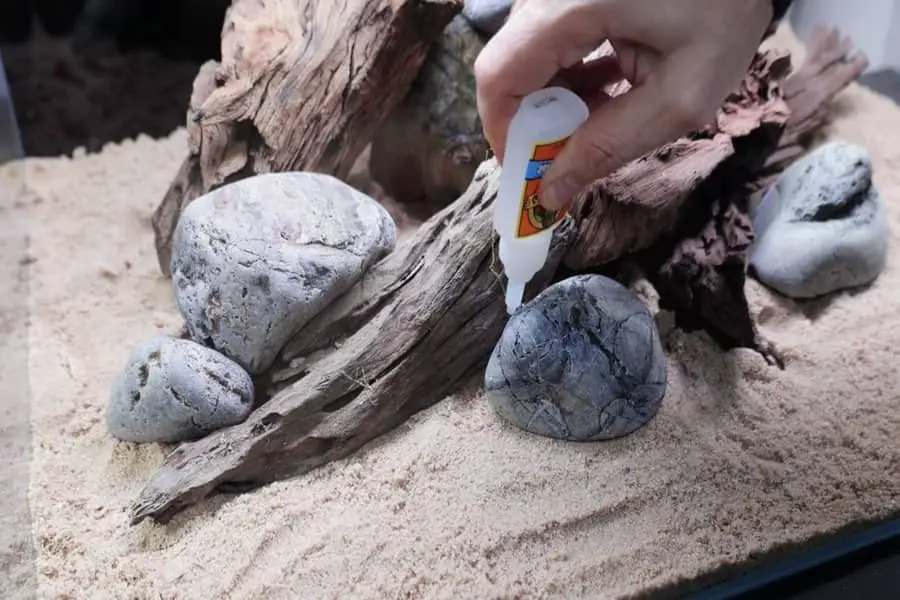
If you don’t want to drill holes, use screws, or put anything on the top of the driftwood, gluing it is probably your last resort.
Many people prefer ‘siliconing’ the driftwood directly to the bottom glass. It’s a perfect solution to stabilize any wood log in your tank. However, if you want to change your scape in the future, it might be difficult to remove silicon from the glass.
Therefore, we suggest gluing your driftwood to a piece of slate using underwater epoxy or silicone. Avoid using superglue or likewise material. You can even use a flat rock if you have don’t have tile slate available.
8. By Entangling Wood In Plants
This method is only applicable to small pieces of driftwood that can be easily entangled in plants in the aquarium.
As we know, a wood log starts to sink when it’s waterlogged or has absorbed enough water. So you just have to figure out a way to keep the driftwood submerged for a certain period; until it sinks on its own without any applied pressure.
If it’s a possibility for you to entangle and adjust driftwood in plants, go for it. You have the flexibility to rearrange the log as many times as you need. And most importantly, it’s easy, simple, and does not require anything to make it work.
9. By Tying Driftwood Using Fishing Lines
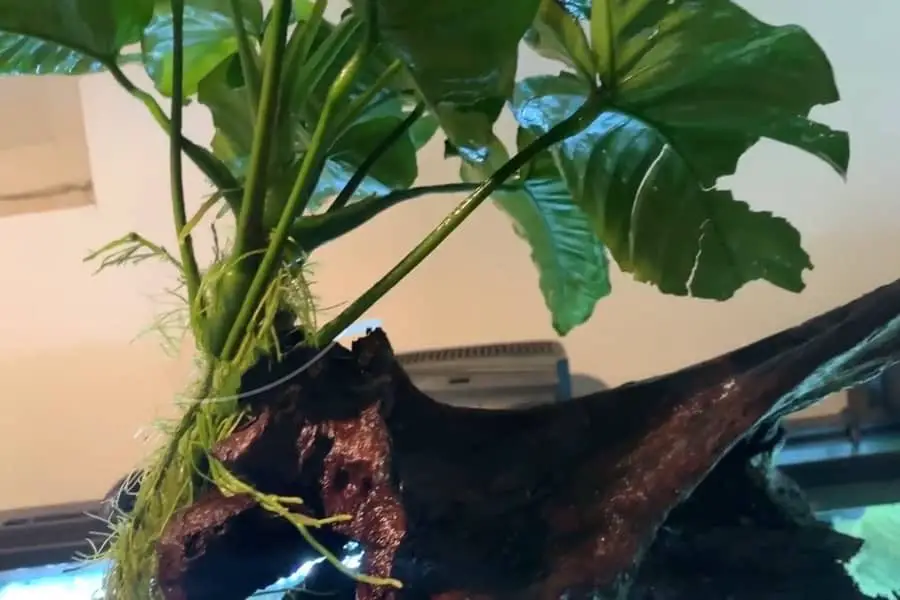
Last but not least, another brilliant solution to keep driftwood from floating is to tie it with rocks or plants using a fishing line. This technique works exceptionally well for small to medium-sized driftwoods.
You can use fishing lines made from monofilament material. It’s strong, durable, and won’t leach any chemicals in the water. Moreover, fishing lines are somewhat invisible underwater if kept in shady areas.
How Long It Take For Driftwood to Sink?
It takes driftwood to be fully saturated to sink. Now, the question arises, what’s the time driftwood typically takes to fully absorb the water.
It depends on the type of wood and how thick the pieces are. Some woods are more porous than others and therefore take less time to soak the water and become sinkable. On the other hand, if you are dealing with hardwood, it may take up to a week or more to get waterlogged.
So it’s not possible to tell the exact time driftwood might take to sink. The only way is to leave it constantly submerged and have patience. Eventually, it will sink.
Frequently Asked Questions
Are tannins harmful to fish?
Tannins aren’t harmful to fish. They gradually lower the pH and provide a slightly acidic environment; it is more like recreating natural water source conditions in aquariums. On top of that, tannins help keep parasites and infection-causing bacteria at bay. However, the only caveat is the appearance of the aquarium; it causes the water to be brown or yellow.
What is the slimy white stuff on driftwoods?
It is mainly caused by colonizing bacteria and is natural. You will mostly find it on new driftwoods that aren’t saturated. It’s not harmful; you may even see shrimp feeding on this slimy white stuff. You can clean it off if you want or leave it as it is. It will be automatically gone in some time.
Conclusion
So that is it for this article. We hope the methods shared above helps you make your stubborn driftwood sink. Let us know which technique worked for you, and also share if you know any ‘secrets’ to sink driftwood faster.
